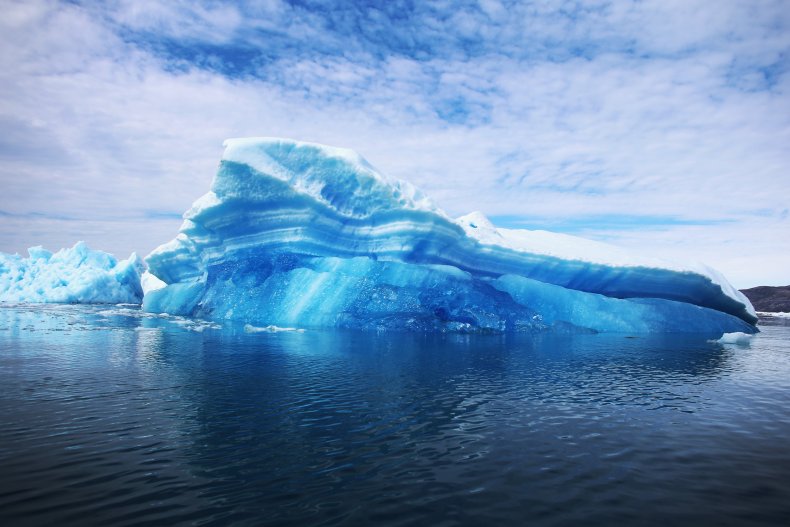BY ED BROWNE ON 3/3/21
Arctic temperatures have been exceptionally warm this year amid a disruption in the polar vortex, according to weather maps.
Scott Duncan, co-owner of the weather-modelling service WXCharts, posted a series of images on Twitter highlighting temperature anomalies in the Northern Hemisphere through December, January and February 2021.
They show regions such as Greenland, Canada, and the Arctic colored deep red, indicating they are warmer than they would be in a normal winter.
"The winter was exceptionally warm for parts of Canada, Greenland, and some of the high Arctic," Duncan said. "Anomalous warmth in the high latitudes often occurs when there is polar vortex disruption."
Vortex disruption has been linked to the cold blast which brought down Texas' power grid earlier this year, leaving millions without power.
The polar vortex is an area of low pressure and cold air around both the north and south poles that is always present. It rotates counter clockwise, which has the effect of keeping cold air in those locations. Duncan likened the vortex to a doughnut due to its circular shape.
When the polar vortex is disrupted, its circular shape gets warped. This allows the cold air that is normally contained over the Arctic to spread down towards other regions, resulting in temperature drops in affected areas.
According to a report published in the journal Nature Climate Change in October 2016, the vortex has been weakening over a period of 30 years, meaning cold surface air is more likely to spread from high latitudes down into lower ones, including North America. The report also states that this shift in the polar vortex is closely related to Arctic sea ice loss.
Jennifer Francis, a climate scientist at the Woodwell Climate Research Center in Massachusetts, said the recent disruption in the polar vortex was a "major breakdown."
She told NBC News: "It really is the cause of all these crazy weather events in the Northern Hemisphere."
Judah Cohen, director of seasonal forecasting at Atmospheric and Environmental Research, told Bloomberg a weakening of the polar vortex can be attributed to climate change.
Richard Hall, a research associate at the School of Geographical Sciences at the University of Bristol, told Newsweek it is also common for Arctic warming not to be linked to stratospheric polar vortex changes.
According to a report published in the journal Nature Climate Change in October 2016, the vortex has been weakening over a period of 30 years, meaning cold surface air is more likely to spread from high latitudes down into lower ones, including North America. The report also states that this shift in the polar vortex is closely related to Arctic sea ice loss.
Jennifer Francis, a climate scientist at the Woodwell Climate Research Center in Massachusetts, said the recent disruption in the polar vortex was a "major breakdown."
She told NBC News: "It really is the cause of all these crazy weather events in the Northern Hemisphere."
Judah Cohen, director of seasonal forecasting at Atmospheric and Environmental Research, told Bloomberg a weakening of the polar vortex can be attributed to climate change.
Richard Hall, a research associate at the School of Geographical Sciences at the University of Bristol, told Newsweek it is also common for Arctic warming not to be linked to stratospheric polar vortex changes.
VIDEO
"The Arctic can be warm as a result of transport of heat and moisture into the Arctic, via storms tracking polewards," he said.
Over the past three decades, the Arctic has been warming up around two times as fast as the rest of the planet in a phenomenon known as arctic amplification, according to the National Snow & Ice Data Center.
Arctic amplification is a phenomenon in which the effects of climate change lead to a runaway effect, creating an environment where further warming is more likely to occur.
For example, white sea ice reflects sunlight and heat away from itself, but when it melts due to high temperatures, it exposes the darker sea to sunlight instead, which absorbs it and drives further loss of sea ice.
HELP ME, I AM MELTING


Icebergs floating on the water on July 30, 2013 in Qaqortoq,
Greenland. Weather maps show parts of the region have
been abnormally warm this winter.
JOE RAEDLE/GETTY
No comments:
Post a Comment